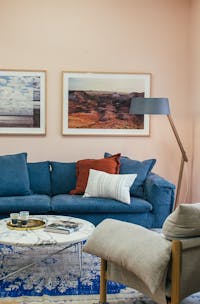Pergola Fort Lauderdale designers excel at creating custom outdoor structures that seamlessly complement existing architecture rather than appearing as disconnected afterthoughts. By carefully analyzing home styles, understanding design principles from various architectural periods, and incorporating personalized details that reflect homeowners' tastes, these professionals transform ordinary backyards into cohesive outdoor living environments that feel like natural extensions of interior spaces.
Understanding Architectural Style as the Foundation
Successful pergola design begins with thorough analysis of existing home architecture. Fort Lauderdale's diverse residential landscape includes Mediterranean Revival estates with stucco walls and clay tile roofs, mid-century modern homes featuring clean lines and flat roofs, Caribbean-style residences with bright colors and tropical details, coastal contemporary designs emphasizing glass and natural materials, and traditional ranch homes with conventional pitched roofs and practical layouts.
Each architectural style suggests specific pergola design approaches. Attempting to impose incompatible styles creates visual discord that diminishes rather than enhances property appeal. Professional designers invest time understanding the architectural language of homes before proposing pergola concepts, ensuring recommendations harmonize with existing structures rather than conflicting with them.
This analysis extends beyond obvious features to include subtle details that define architectural character. Roof pitch angles, overhang proportions, window and door trim styles, material textures and colors, and decorative elements all provide clues about appropriate pergola design directions. Designers attuned to these details create structures that feel intentional and integrated rather than arbitrary additions.
Mediterranean Revival: Embracing Old World Charm
Mediterranean Revival architecture dominates many Fort Lauderdale neighborhoods, characterized by stucco exteriors, clay tile roofs, arched openings, and wrought iron details. Pergolas complementing this style typically incorporate similar arched elements in beam ends or side details, stucco-covered posts or columns that match home exteriors, decorative corbels or brackets echoing architectural details, and clay tile caps on posts for material continuity.
Color selections for Mediterranean pergolas favor warm earth tones—ochres, terracottas, and warm whites—that coordinate with existing stucco colors. Stained wood beams in rich browns complement clay tile roofs while maintaining the warm palette characteristic of this style. The overall effect should evoke European courtyard elegance adapted to Florida's climate.
Decorative ironwork provides opportunities for customization that reinforces Mediterranean character. Wrought iron brackets supporting beams, decorative iron gates or screens defining spaces, and custom iron details on posts all contribute to authentic period feel. These metal elements, properly treated to resist coastal corrosion, add visual interest while demonstrating attention to stylistic consistency.
Mid-Century Modern: Clean Lines and Minimalist Appeal
Mid-century modern homes, with their emphasis on horizontal lines, open spaces, and indoor-outdoor flow, suggest very different pergola approaches. Designs appropriate for these homes feature simple geometric forms without excessive ornamentation, flat or low-slope roof lines that echo home architecture, posts with clean profiles rather than decorative details, and materials emphasizing natural textures rather than applied finishes.
Wood species like cedar or ipe, left natural or stained in subtle tones, complement the honest material expression characteristic of mid-century design. Alternatively, powder-coated aluminum in black, white, or bronze offers maintenance-free solutions that maintain appropriate visual weight. The goal involves creating structures that appear effortless and unadorned while remaining thoughtfully proportioned.
Integration with landscaping becomes particularly important for mid-century pergolas. These designs often incorporate built-in planters, strategic cutouts allowing existing trees to grow through structures, and sight lines that frame carefully composed garden views. The pergola functions as organizing element within the broader landscape rather than standalone focal point.
Coastal Contemporary: Blending Modern and Tropical
Coastal contemporary architecture, increasingly popular in Fort Lauderdale, combines modern minimalism with tropical sensibility. These homes typically feature expansive glass walls, neutral color palettes, natural materials like wood and stone, and relaxed sophistication. Pergolas serving these properties balance clean modern lines with organic textures, incorporate materials that age gracefully, maintain visual lightness that doesn't block views, and create spaces that flow naturally between indoor and outdoor areas.
Material combinations work particularly well for coastal contemporary pergolas. Sleek metal posts supporting natural wood beams create appealing contrasts. Composite materials with convincing wood grain offer low maintenance while maintaining warm aesthetics. The key involves achieving refinement without formality—structures should feel sophisticated yet approachable.
Color palettes favor soft neutrals—grays, taupes, whites, and natural wood tones—that recede visually rather than demanding attention. These subtle backgrounds allow landscape plantings, furniture, and ocean views to remain focal points while the pergola provides structure and shade. Occasional accent colors might echo interior design choices, creating visual connections between spaces.
Traditional and Ranch: Timeless Appeal with Personal Touches
Traditional home styles, including ranch homes and conventional two-story designs, offer flexibility in pergola design approaches. These structures can lean contemporary, traditional, or transitional depending on homeowner preferences and specific architectural details. Common elements include classic post-and-beam construction, pitched or flat roofs depending on home architecture, proportions that relate to home scale, and details that echo existing trim and molding.
Paint or stain colors typically coordinate with home exteriors—matching trim colors, complementing siding tones, or providing subtle contrast that defines the pergola without creating jarring visual breaks. White-painted pergolas remain popular for traditional homes, offering crisp, clean appearance that works across various color schemes.
Decorative details allow personalization within traditional frameworks. Beam end treatments ranging from simple angled cuts to more elaborate profiles, post caps and trim that echo home architectural details, and lattice panels or decorative brackets that add visual interest all provide customization opportunities. These details should enhance rather than overwhelm, maintaining the understated elegance characteristic of traditional design.
Why Pergola Fort Lauderdale Designers Prioritize Personal Lifestyle Integration
Beyond architectural compatibility, successful pergola design addresses how homeowners actually use outdoor spaces. Detailed lifestyle conversations reveal entertainment preferences—intimate dinners versus large parties, relaxation priorities—reading nooks versus meditation spaces, activity interests—outdoor dining versus lounging areas, and daily routines—morning coffee spots versus evening gathering spaces.
These lifestyle factors influence numerous design decisions. Pergolas intended primarily for dining require different proportions and orientations than those designed for lounging. Structures supporting regular large gatherings need different scales than intimate retreat spaces. Understanding intended use from the outset ensures designs deliver both aesthetic appeal and functional performance.
Privacy needs also shape design approaches. Urban or suburban lots with close neighbors might incorporate privacy screens, strategic plantings, or orientation that shields spaces from sightlines. Conversely, properties with expansive private yards can emphasize openness and view preservation. Designers balance privacy requirements with maintaining the open, airy character that makes pergolas appealing.
Custom Details That Reflect Personal Style
Personalization extends beyond matching architectural styles to include unique details reflecting individual tastes and interests. Custom beam carvings or routed patterns, integrated lighting designed around specific ambiance goals, built-in features like wine storage or serving areas, artistic metal work or custom hardware, and specialty finishes including decorative painting or texturing all provide opportunities for personal expression.
These custom elements transform standard structures into unique expressions of homeowner personality. A wine enthusiast might incorporate built-in wine storage and stemware racks. An artist could commission custom metal brackets featuring meaningful designs. A gardener might integrate extensive planting areas within the pergola framework. Professional designers help translate these personal interests into cohesive design elements that enhance rather than clutter overall compositions.
Color choices beyond standard options offer another personalization avenue. While coordination with existing architecture remains important, homeowners increasingly explore unexpected color combinations that express individuality. Chalky pastels, deep jewel tones, or sophisticated two-tone treatments can distinguish pergolas while maintaining visual harmony when thoughtfully executed.
Material Selections That Balance Aesthetics and Performance
Material choices significantly impact both appearance and long-term satisfaction. Professional designers help homeowners understand tradeoffs between different options regarding maintenance requirements, longevity in coastal environments, aesthetic qualities and aging characteristics, cost considerations including initial investment and ongoing care, and environmental impact for sustainability-conscious clients.
Natural wood offers warmth and traditional beauty but requires periodic maintenance. Composite materials provide low-maintenance convenience with increasingly convincing natural appearance. Aluminum and vinyl offer durability with minimal upkeep but may feel less organic. Each option suits different priorities and preferences.
Finish selections dramatically affect final appearance. Natural wood left to weather develops silver-gray patina that some find appealing while others dislike. Stained wood maintains color longer but requires reapplication every few years. Painted finishes offer unlimited color options but demand the most maintenance. Understanding these characteristics helps homeowners make informed decisions aligned with their aesthetic preferences and maintenance tolerance.
Integration with Comprehensive Outdoor Living Plans
How Pergola Fort Lauderdale Professionals Coordinate Multiple Elements ensures cohesive outdoor environments rather than collections of disconnected features. Comprehensive planning addresses hardscape design including patios and walkways, landscape plantings that complement structures, outdoor kitchens and dining areas, fire features and water elements, lighting systems for ambiance and function, and furniture arrangements that define activity zones.
This integrated approach creates outdoor rooms with defined purposes and comfortable flow between areas. The pergola becomes the organizing element that ties disparate features into cohesive wholes. Professional designers coordinate all elements from the outset, preventing the disjointed appearance that results from adding features incrementally without overall vision.
Color and material continuity throughout outdoor spaces strengthens design cohesion. Repeating pergola materials in furniture choices, echoing colors in cushions and accessories, and coordinating hardscape materials with structural elements all contribute to unified appearance. These subtle connections create sophisticated outdoor environments that feel carefully considered rather than accidentally assembled.
Working with Designers to Achieve Your Vision
Successful custom pergola projects require clear communication between homeowners and designers. Sharing inspiration photos from magazines or online sources, articulating functional requirements and lifestyle priorities, establishing realistic budgets including materials and features, and discussing maintenance expectations and limitations all help designers create proposals aligned with homeowner visions.
Professional designers bring expertise that helps refine rough ideas into workable plans. They identify potential challenges early, suggest alternatives when initial concepts prove impractical, and offer creative solutions that achieve desired outcomes through unexpected approaches. This collaborative process typically produces superior results compared to homeowners working alone or with contractors who execute ideas without design input.
Budget discussions should occur early and honestly. Quality custom pergolas represent significant investments, but costs vary dramatically based on size, materials, details, and features. Designers can present options at different price points, helping homeowners understand what's achievable within their budgets and where additional investment delivers proportionate value. This transparency prevents disappointing surprises and ensures projects proceed smoothly.
Conclusion
Creating pergolas that truly complement homes and reflect personal style requires more than construction skill—it demands design sensitivity, architectural knowledge, and commitment to understanding client needs. Professional designers analyze existing architecture, explore lifestyle requirements, suggest appropriate materials and details, and coordinate pergolas within comprehensive outdoor living plans. Whether you're drawn to Mediterranean elegance, mid-century minimalism, coastal contemporary sophistication, or traditional charm, working with experienced professionals who offer both pergola design and florida screen enclosures ensures outdoor structures that enhance your property's character while providing functional spaces perfectly suited to your South Florida lifestyle. The result transforms outdoor areas into personalized retreats that feel like natural extensions of your home, delivering both immediate enjoyment and lasting value that grows as you create memories in these thoughtfully designed spaces.






Comments